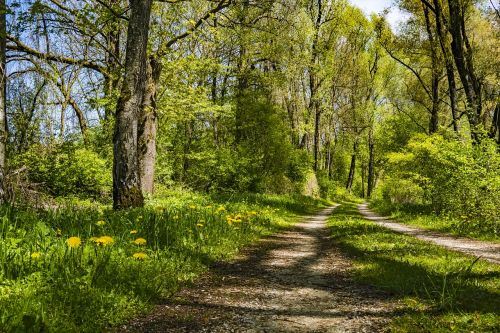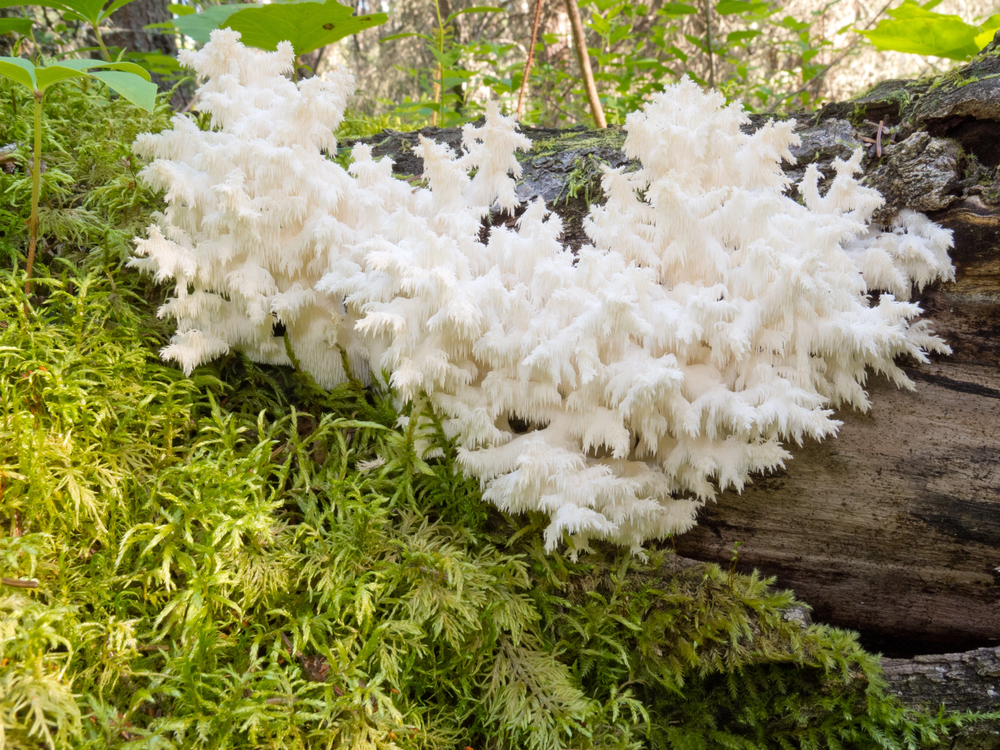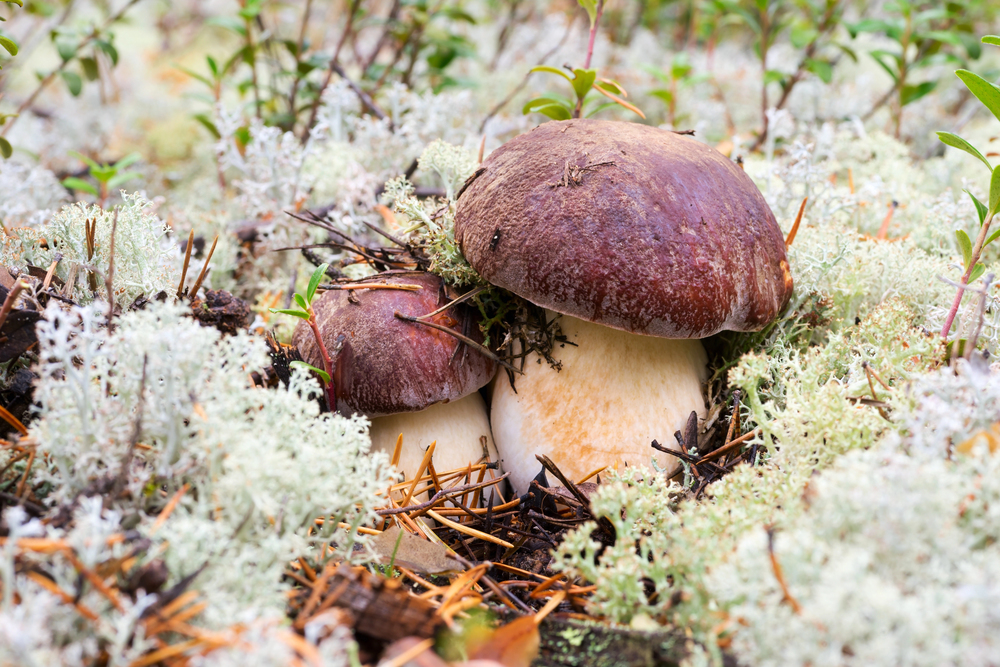Among the most sought-after wild mushrooms, Chicken of the Woods stands out with its unmistakable bright orange-yellow shelves cascading down hardwood trees like nature’s own neon sign. While its striking appearance and savory, chicken-like flavor make it an appealing target for novice foragers, proper identification remains vital for safe harvesting. Though considered one of the “foolproof four” edible mushrooms, several key characteristics must be understood before venturing out to collect this prized fungus. Let’s examine the fundamental features and precautions that will help guarantee successful and safe foraging adventures.
Key Takeaways
- Look for bright yellow to orange fan-shaped clusters growing on dead hardwood trees, never on the ground.
- Verify the underside has tiny white to yellow pores, not gills like the toxic Jack O’Lantern mushroom.
- Young specimens should be soft and spongy, with vibrant colors and clean edges.
- Check that it’s growing on safe host trees like oak, cherry, or beech, avoiding potentially toxic trees.
- Harvest only fresh growths within 2-3 days of emergence, cutting cleanly at the base with a sharp knife.
Key Physical Features
The spectacular Chicken of the Woods mushroom stands out in the forest with its distinctive physical characteristics. These fungi exhibit vibrant yellow to orange coloration, creating a striking visual display against tree bark, with young specimens displaying brilliant sulphur-yellow hues and a suede-like surface texture. These remarkable fungi can grow to 0.5 meters across on their host trees.
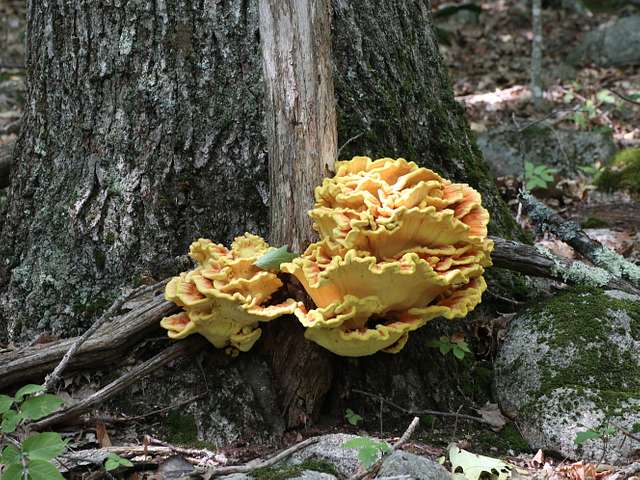
The mushroom’s form consists of fan-shaped or semi-circular shelves that often grow in overlapping clusters, with individual caps reaching sizes from several inches to over a foot in diameter. When growing on fallen trunks, they commonly form beautiful rosette patterns and can develop into clusters several feet tall.
Young specimens possess a soft, spongy texture and release yellow liquid when compressed, while mature specimens become tough and leathery. The underside features small pores rather than gills, starting white in young mushrooms before transitioning to yellow with age.
These fungi typically lack a traditional stem, instead attaching directly to their host trees through a short, stubby base. The spore print ranges from white to yellow, providing an additional identifying characteristic for foragers seeking to confirm their find.
Where and When to Look?
With its distinctive appearance mastered, successful foraging for Chicken of the Woods requires understanding both location and timing. This striking fungus primarily inhabits dead or dying hardwood trees, with a particular affinity for oak, cherry, and beech species, while occasionally appearing on yew. Remember that this mushroom will never grow on ground, making identification more reliable when following proper foraging guidelines.
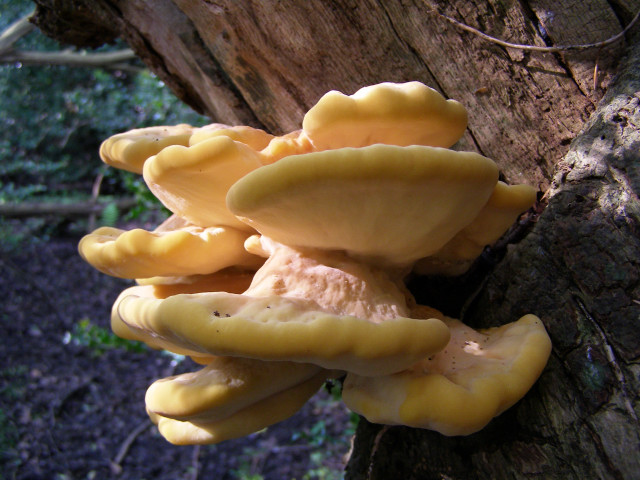
The most productive hunting season extends from late spring through early fall, though specific peak periods vary by region and local climate conditions. Foragers in Southern Ohio, for instance, often find the greatest abundance during September and October, while other locations may experience earlier flushes.
Look for these mushrooms growing in deciduous woodlands, urban parks, and even residential gardens, as they readily adapt to various environments. The fungus typically appears on tree trunks, stumps, and occasionally at the base of living trees or buried roots, forming large, overlapping clusters.
Annual reappearance in previously successful locations is common, making it worthwhile to document productive spots. Weather patterns, particularly humidity and temperature, significantly influence fruiting periods, so monitoring local conditions can help predict ideal foraging times.
Foraging Safety Tips
Safely foraging for Chicken of the Woods requires meticulous attention to detail and strict adherence to established guidelines. With approximately 7,500 mushroom poisoning cases occurring annually in the United States, proper identification and harvesting techniques are vital for preventing adverse outcomes.
When collecting Chicken of the Woods, remember that it never grows on the ground, which serves as a significant identification marker. A proper cleaning tool, like a paintbrush, helps remove surface dirt and debris without damaging the mushroom’s structure. Always verify that the host tree isn’t a toxic species like Yew, as mushrooms can absorb dangerous compounds from their growing medium. Document your findings with photographs and consult experienced foragers or online communities for confirmation.
Maintain sustainable harvesting practices by taking no more than one in ten mushrooms and cutting specimens about an inch from the base to allow regeneration. Use proper equipment, including a sharp knife and appropriate container, while ensuring minimal impact on the surrounding environment.
Consider investing in a thorough mushroom guide and developing a systematic approach to identification. Focus on key characteristics, and never consume any mushroom without complete certainty of its identity, as misidentification can lead to serious health consequences.
Similar Looking Species
When in doubt, always verify the key identifying features: fan-shaped clusters, bright orange-yellow coloration, and tiny pores rather than gills on the underside. Be particularly cautious of toxic Jack O’Lantern mushrooms which can cause severe gastrointestinal issues if misidentified.
Proper Harvesting Methods
Proper harvesting of Chicken of the Woods requires three essential tools and techniques: a sharp knife, careful cutting methods, and timing. Begin by selecting a sturdy, sharp knife that can cleanly slice through the mushroom’s base, ensuring precise cuts that minimize damage to both the fungus and its host tree.
The ideal harvest window occurs when the mushrooms display vibrant colors and maintain a firm, slightly spongy texture, typically within 2-3 days of emergence. These mushrooms can be found growing in large clumps outdoors throughout the foraging season. After heavy rains, you’ll have approximately 3-4 days to collect these specimens before they deteriorate, particularly in areas with lower humidity.
For sustainable harvesting, cut the entire cluster at its base using your knife, or selectively trim the tender portions from mature caps. Avoid pulling the mushrooms directly from the tree, as this method often introduces debris and can damage the host wood, potentially reducing future yields.
Post-harvest, dust off any debris rather than washing the mushrooms, and swiftly process them for storage. Divide the harvest into half-pound to one-pound portions, vacuum seal them if possible, and remember to cook thoroughly before consumption.

